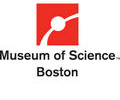Tissue engineering involves the application of the principles and methods of engineering and the life sciences towards the development of biological substitutes to restore, maintain, or improve functions of tissues or organs. It is expected that engineered tissues can help address the growing problem of tissue and organ failure by implanting tissue substitutes grown in the laboratory that can provide immediate function and integrate with surrounding host issues. The field relies on an interdisciplinary approach to solve complex tissue and organ problems in the laboratory. Teams of engineers, biologists and clinicians are essential to the successful engineering of these systems. Requirements for tissue engineering generally include a cell source (often stem cells), biomaterial scaffolds (the structures upon which the cells will stick, grow and produce new tissue) and a bioreactor (laboratory environment designed to mimic some of the conditions present during normal tissue development). With the advanced systems we now have, tissues similar to those in our body can be generated in the laboratory. As a result of active research in the area, new opportunities become available, including the repair and replacement of damaged or diseased tissues in the body, the use of these tissues for the study of disease formation and progression (such as cancer), and therapeutic treatments (such as to identify new drugs). We have prepared a set of four presentations to illustrate some of the exciting opportunities that tissue engineering offers to clinical medicine.
Partner:
Museum of Science, Boston
